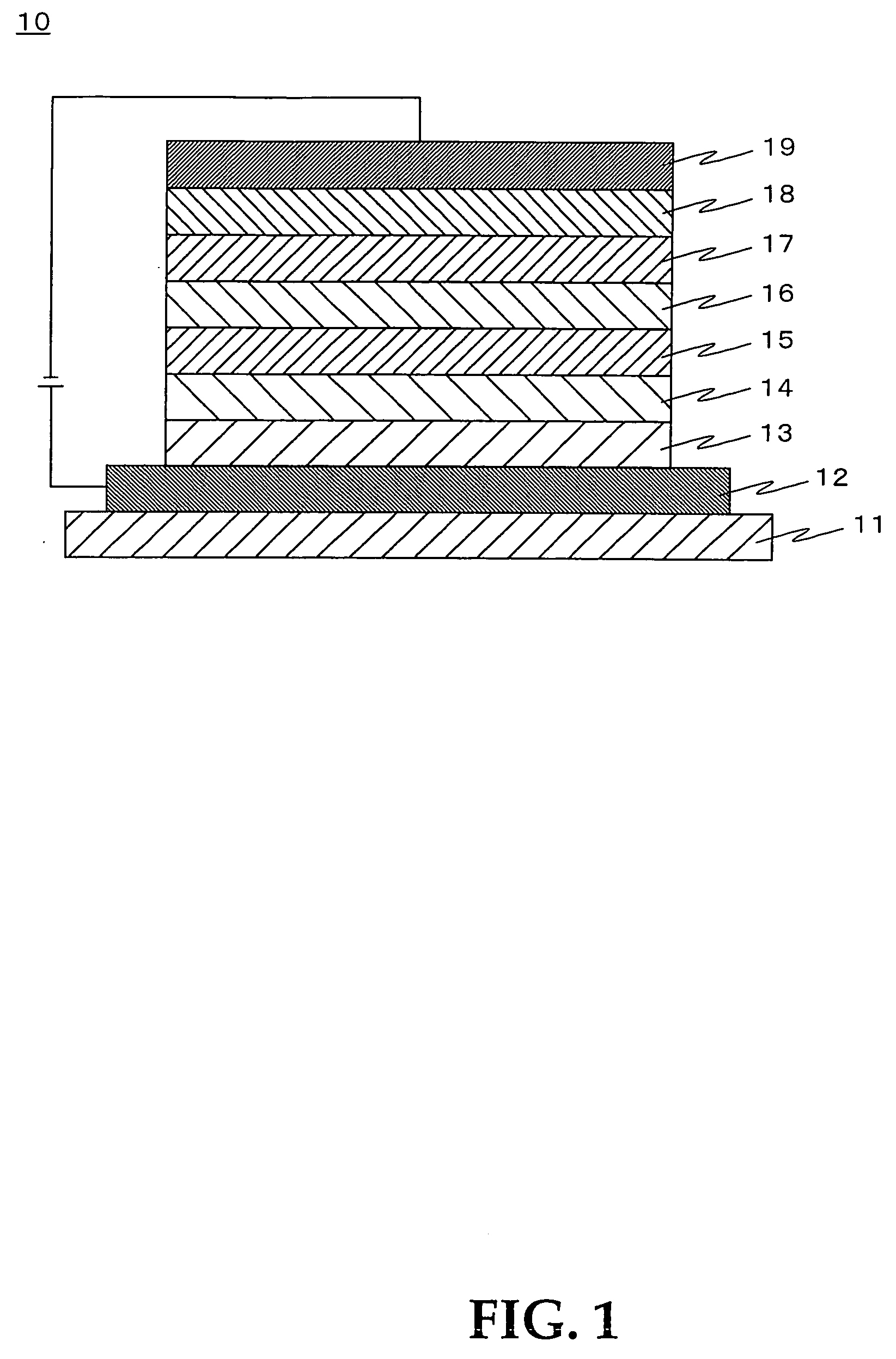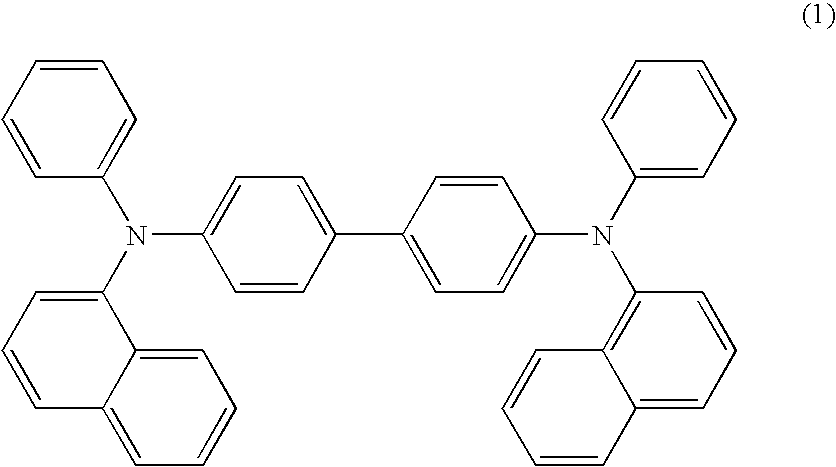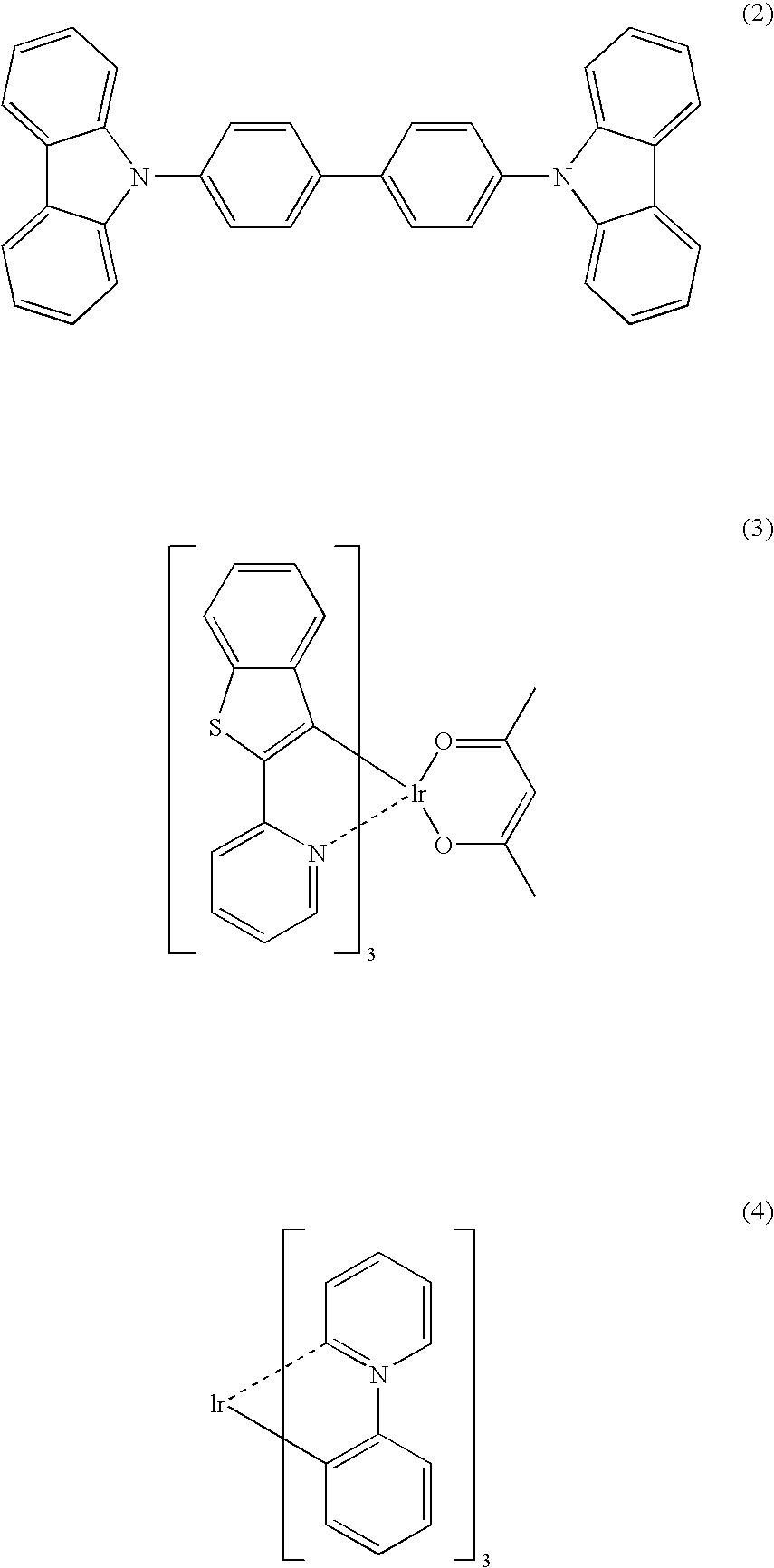Organic EL devices
- Summary
- Abstract
- Description
- Claims
- Application Information
AI Technical Summary
Benefits of technology
Problems solved by technology
Method used
Image
Examples
example 1
[0123] A transparent glass substrate (11), on one of whose surfaces an anode (12) made of an ITO layer of 150 nm thickness had been formed, was washed with an alkali and then with pure water, dried, and then cleaned with UV-ozone.
[0124] Onto the anode (12) on the thus washed substrate (11), NPB of the following formula (1) was vapor-deposited in a vacuum vapor deposition apparatus (a carbon crucible, at a vapor deposition speed of 0.1 nm / s, in vacuo around 5.0×10−5 Pa) to prepare a 40 nm thickness layer to be a hole-transporting layer (13).
[0125] Onto the hole-transporting layer (13), 89.5 weight % of a phosphorescent host CBP of the following formula (2), 0.5 weight % of a red phosphorescent dopant btP2Ir(acac) of the following formula (3), and 10 weight % of a green phosphorescent dopant Ir(ppy)3 of the following formula (4) were co-vapor-deposited in a vacuum vapor deposition apparatus (a carbon crucible, at a vapor deposition speed of 0.1 nm / s, in vacuo around 5.0×10−5 Pa) to...
example 2
[0134] In example 2, the phosphorescent light-emitting layer (14) as in example 1 was divided into a red phosphorescent light-emitting layer of 1 nm thickness comprising 5 weight % of a red phosphorescent dopant and a green phosphorescent light-emitting layer of 8 nm thickness comprising 10 weight % of a green phosphorescent dopant. As the hosts of both the phosphorescent light-emitting layers, the red phosphorescent dopant, and the green phosphorescent dopant, the same materials as in example 1 were used. Except for the lamination order of the phosphorescent and fluorescent light-emitting layers being altered as shown in TABLE 1, an organic EL device was prepared similar to example 1. In example 2, the thickness of the red phosphorescent light-emitting layer was 1 nm, which was thinner than that of a single-molecular film of the phosphorescent host CBP, so the red phosphorescent light-emitting layer was an island thin film. Similarly to example 1, the electric power efficiency, etc...
example 3
[0135] In example 3, an organic EL device was prepared similarly to in example 1 except that the non-light-emitting interface layer was made only of a hole-transporting material CuPc. Similar to example 1, the electric power efficiency, etc. of the prepared organic EL device were measured. The results obtained are shown in TABLE 2 wherein the electric power efficiency and the half-life are shown as relative values with respect to those of example 1.
TABLE 2electricchroma-chroma-interface layerpowerticityticityexamples(weight %)efficiencyxyhalf-life1NPB:BCP10.320.331(50:50)3CuPc0.940.300.300.92(100)
PUM
| Property | Measurement | Unit |
|---|---|---|
| Percent by mass | aaaaa | aaaaa |
| Percent by mass | aaaaa | aaaaa |
| Thickness | aaaaa | aaaaa |
Abstract
Description
Claims
Application Information
 Login to View More
Login to View More - R&D
- Intellectual Property
- Life Sciences
- Materials
- Tech Scout
- Unparalleled Data Quality
- Higher Quality Content
- 60% Fewer Hallucinations
Browse by: Latest US Patents, China's latest patents, Technical Efficacy Thesaurus, Application Domain, Technology Topic, Popular Technical Reports.
© 2025 PatSnap. All rights reserved.Legal|Privacy policy|Modern Slavery Act Transparency Statement|Sitemap|About US| Contact US: help@patsnap.com



